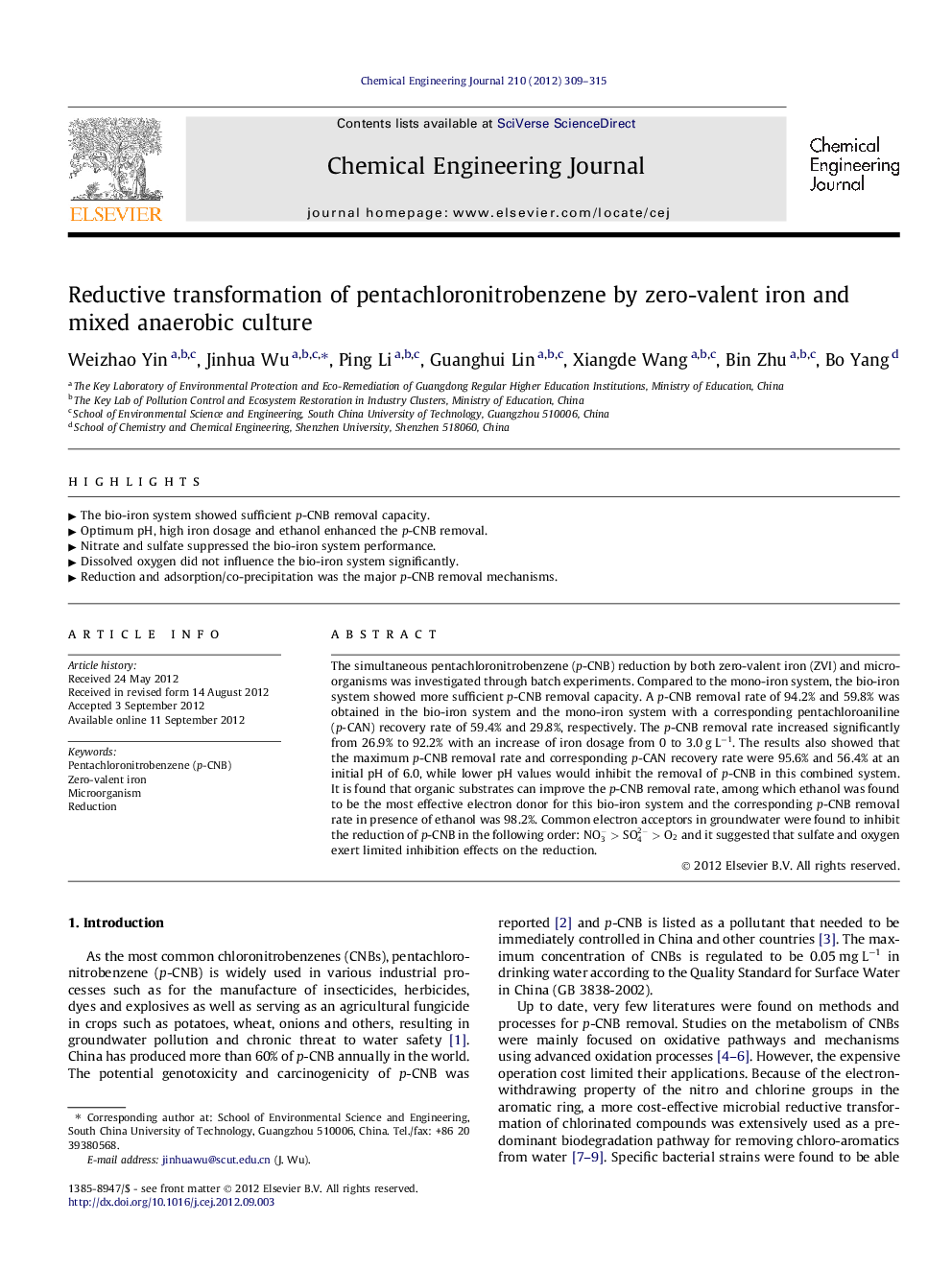| Article ID | Journal | Published Year | Pages | File Type |
|---|---|---|---|---|
| 149338 | Chemical Engineering Journal | 2012 | 7 Pages |
The simultaneous pentachloronitrobenzene (p-CNB) reduction by both zero-valent iron (ZVI) and microorganisms was investigated through batch experiments. Compared to the mono-iron system, the bio-iron system showed more sufficient p-CNB removal capacity. A p-CNB removal rate of 94.2% and 59.8% was obtained in the bio-iron system and the mono-iron system with a corresponding pentachloroaniline (p-CAN) recovery rate of 59.4% and 29.8%, respectively. The p-CNB removal rate increased significantly from 26.9% to 92.2% with an increase of iron dosage from 0 to 3.0 g L−1. The results also showed that the maximum p-CNB removal rate and corresponding p-CAN recovery rate were 95.6% and 56.4% at an initial pH of 6.0, while lower pH values would inhibit the removal of p-CNB in this combined system. It is found that organic substrates can improve the p-CNB removal rate, among which ethanol was found to be the most effective electron donor for this bio-iron system and the corresponding p-CNB removal rate in presence of ethanol was 98.2%. Common electron acceptors in groundwater were found to inhibit the reduction of p -CNB in the following order: NO3->SO42->O2 and it suggested that sulfate and oxygen exert limited inhibition effects on the reduction.
► The bio-iron system showed sufficient p-CNB removal capacity. ► Optimum pH, high iron dosage and ethanol enhanced the p-CNB removal. ► Nitrate and sulfate suppressed the bio-iron system performance. ► Dissolved oxygen did not influence the bio-iron system significantly. ► Reduction and adsorption/co-precipitation was the major p-CNB removal mechanisms.
